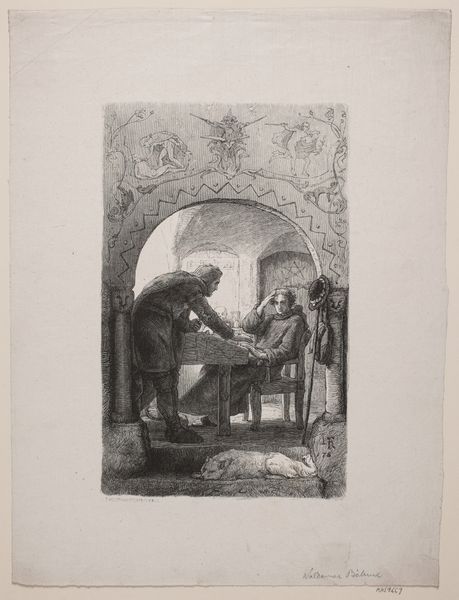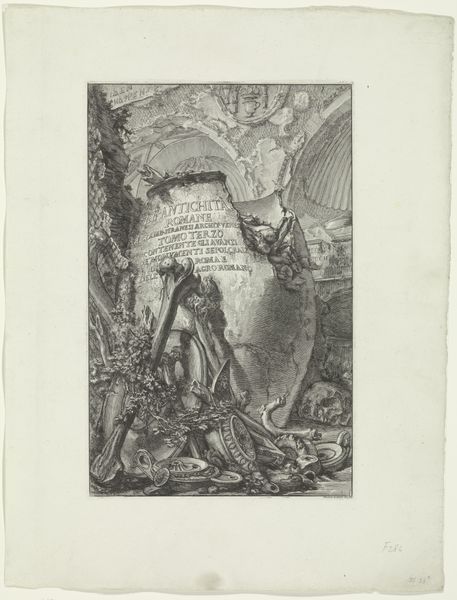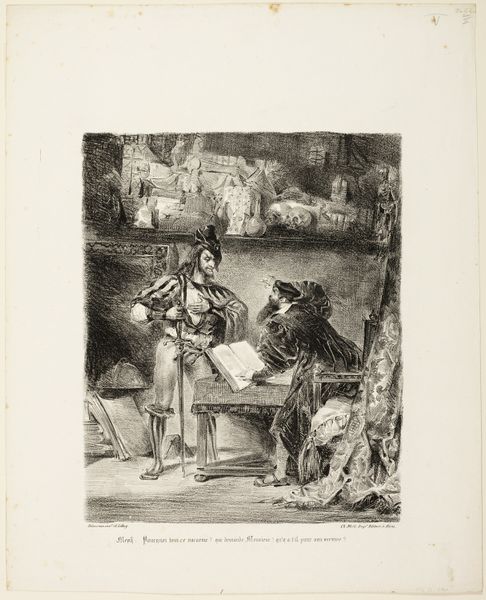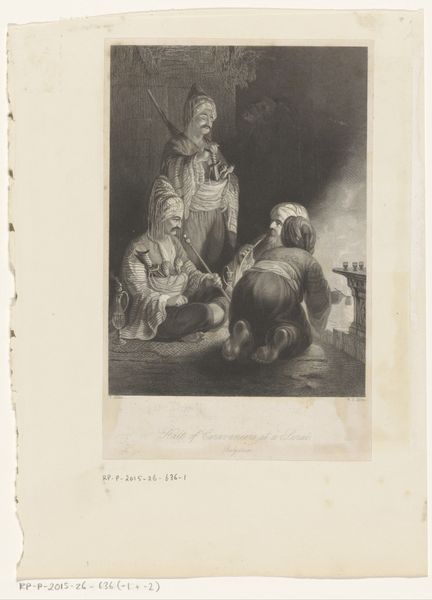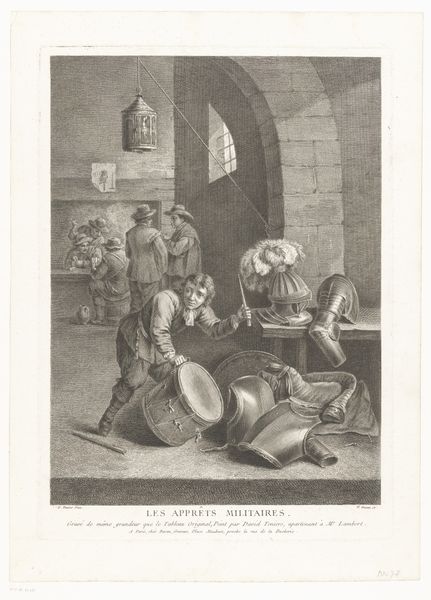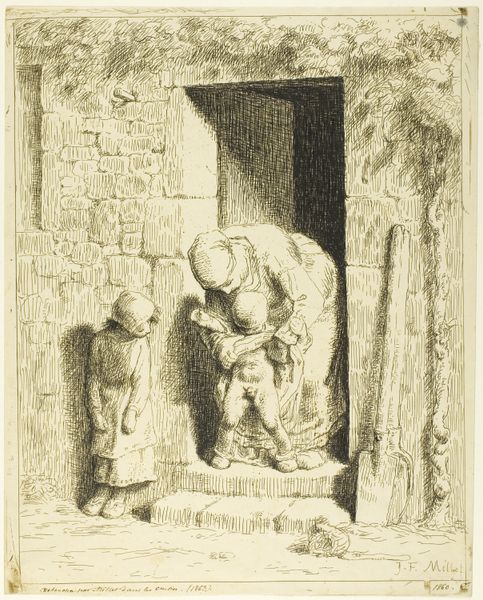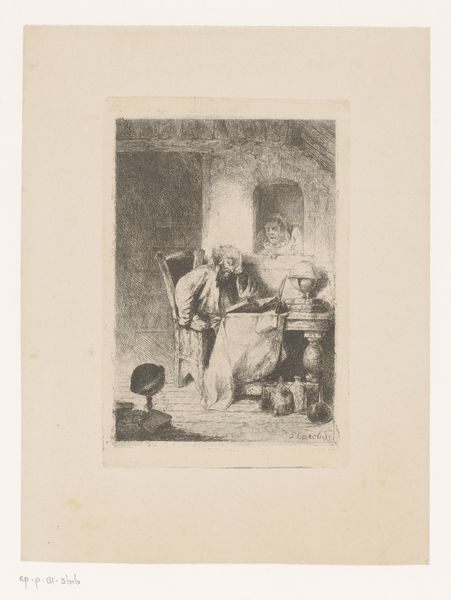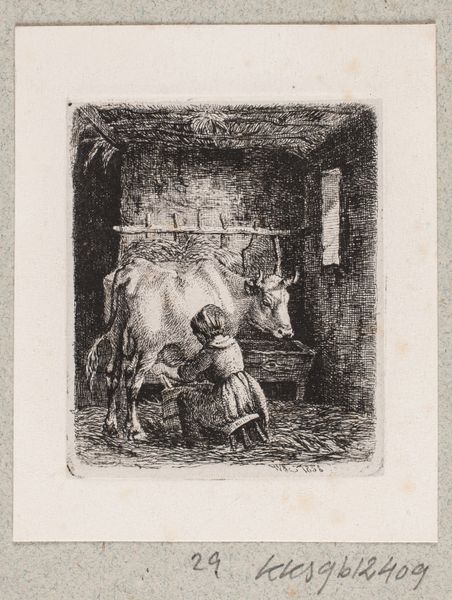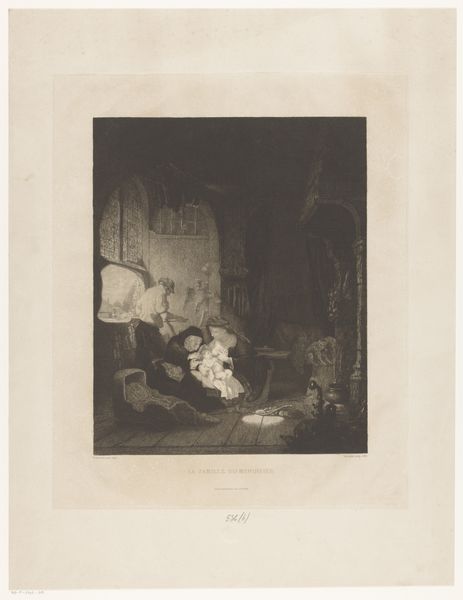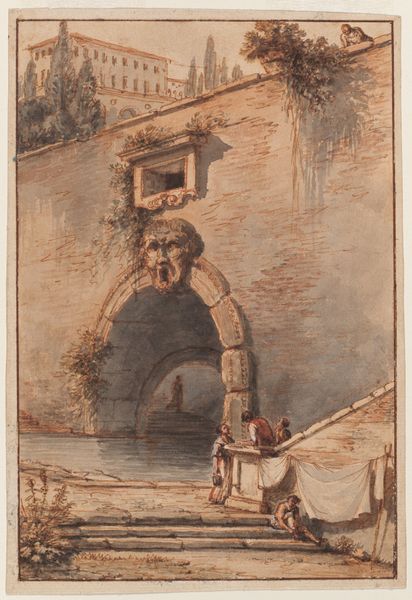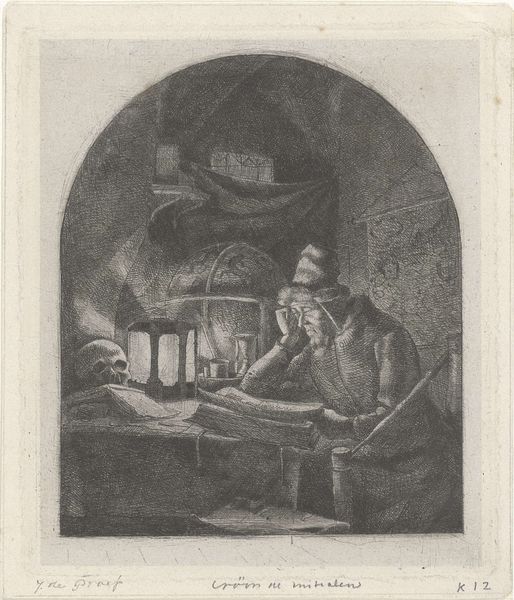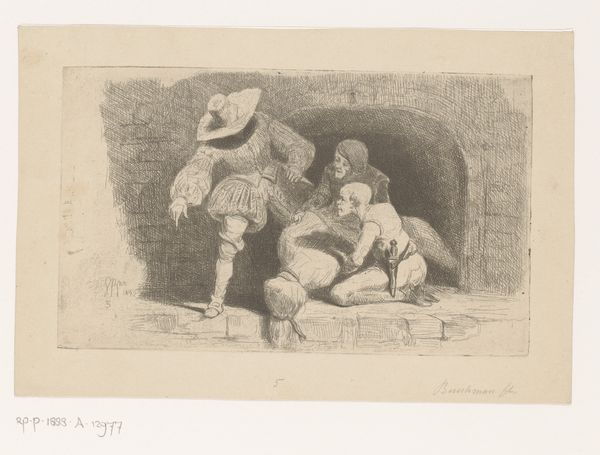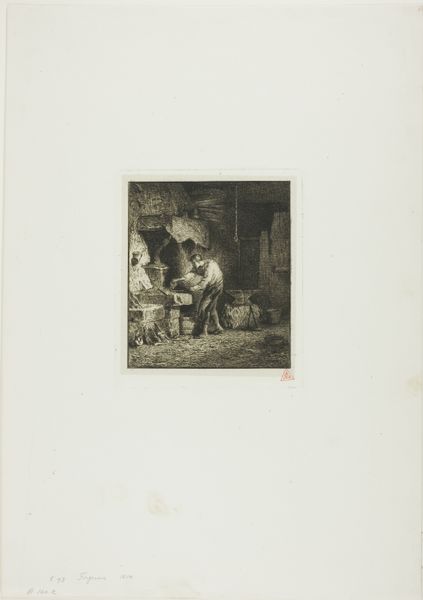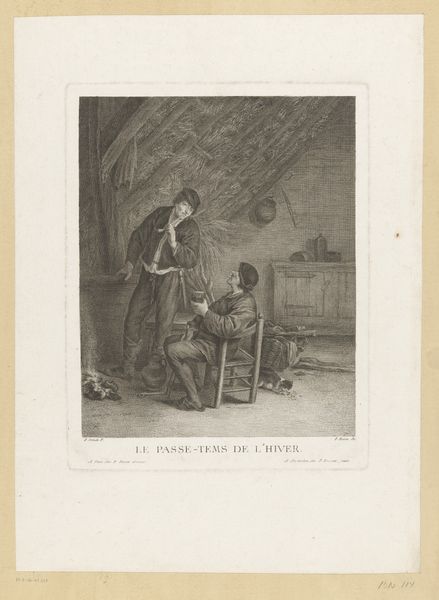
drawing, ink, charcoal
#
drawing
#
landscape
#
charcoal drawing
#
figuration
#
11_renaissance
#
ink
#
line
#
charcoal
#
history-painting
Dimensions: height 378 mm, width 294 mm
Copyright: Rijks Museum: Open Domain
Curator: This drawing by Moses ter Borch, "Saint Jerome and the Lion," was created around 1660 and held at the Rijksmuseum, showcases the saint in his element, alongside the animal he befriended. Editor: It strikes me immediately with its heavy atmosphere. The charcoal work is wonderfully textured, especially with what looks to be animal hide in the foreground—very tactile despite being a drawing. Curator: Ter Borch clearly intended to ground the saint within a tactile world, which makes sense given the symbolism involved. Jerome represents translation, turning the word into accessible material, a transformative act. Editor: Transformative, but also laborious. Look at the precise strokes defining the architecture. It's all about labor and how material is shaped, not just divine inspiration, you know? The drawing itself shows skill and intense human labor. Curator: Indeed. The setting suggests both shelter and confinement, highlighting Jerome’s isolation in his pursuit of knowledge. Note the careful juxtaposition of religious symbols like the cross with the lion, which historically represents strength but is here subdued and almost domestic. It signifies the power of faith to tame even the wildest aspects of nature. Editor: What’s interesting to me is this sense of artificiality even with this "tamed nature." It looks constructed, theatrical almost. Consider all the items: the draped garment, prayer objects, containers—carefully arranged as props, highlighting a certain artifice and intentional construction rather than pure divine essence. Curator: Perhaps it points to the artifice inherent in representation itself? It suggests all acts of translation and transcription inevitably involve a degree of interpretation and recreation. What resonates most with me is that quiet communion. A relationship depicted not with overt dramatic action, but the silent companionship that embodies spiritual transformation. Editor: Yes, that very private moment is intriguing. After looking closer, what grabs me most is how Ter Borch emphasized human effort in all forms to reshape both beliefs and tangible stuff; both equally crucial when comprehending pieces like these.
Comments
No comments
Be the first to comment and join the conversation on the ultimate creative platform.
